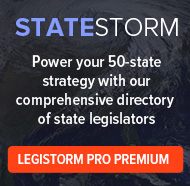Drug Smuggling, Drug Dealing and Drug Abuse: Background and Overview of the Sanctions Under the Federal Controlled Substances Act and Related Statutes (CRS Report for Congress)
Premium Purchase PDF for $24.95 (60 pages)
add to cart or
subscribe for unlimited access
Pro Premium subscribers have free access to our full library of CRS reports.
Subscribe today, or
request a demo to learn more.
| Release Date |
Jan. 30, 2003 |
| Report Number |
97-141 |
| Authors |
Charles Doyle, American Law Division |
| Source Agency |
Congressional Research Service |
Summary:
This is a brief sketch of the death penalty, terms of imprisonment, fines, sentencing guidelines,
forfeitures, civil penalties and other sanctions associated with the proscriptions of the federal
Controlled Substances Act and related statutes. The Controlled Substances Act (CSA) assigns
various plants, drugs and chemicals to one of five schedules and authorizes the Attorney General to
add or reassign substances to the schedules according to the risks they represented and medical
benefits they provided. Those who wish to manufacture, distribute or dispense controlled
substances must be registered with the Attorney General. The Attorney General is authorized to
regulate registrants' business in controlled substances including establishing production quotas for
schedule I and II controlled substances.
Within this basic scheme, the CSA and its offspring attack substance abuse and commerce in
substance abuse at four levels: the unlawful possession, production, or distribution of drugs, and
laundering of the proceeds the illicit traffic generates. A few CSA violations are capital offenses,
but most carry heavy fines and long terms of imprisonment instead. Within the maximums and
minimums established by Congress, the federal sentencing guidelines determine the sentences meted
out as punishment for most federal crimes. The guidelines system is essentially a scorecard system.
Forfeiture is a particularly prevalent feature of the federal anti-drug law enforcement efforts. Illicit
controlled substances, the proceeds from drug trafficking, any property that can be traced to such
proceeds, and any property used to facilitate drug trafficking can be confiscated under federal
forfeiture laws. Civil penalties, the loss of federal benefits, injunctions and revocation of probation
may also attend controlled substance offenses.
It includes a chart of the penalties for crimes involving: heroin; cocaine; crack, PCP; LSD,
marihuana (marijuana); amphetamine; methamphetamine; listed (precursor) chemicals;
paraphernalia; date rape drugs, rave drugs; designer drugs; ecstasy; drug kingpins; as well as the
other substances including narcotics and opiates assigned to Schedule I, Schedule II, Schedule III,
Schedule IV, and Schedule V of the Controlled Substances Act and the Controlled Substances
Import and Export Act (Title II and Title III of the Comprehensive Drug Abuse and Control Act);
drug trafficking; illicit drug import and export; recalcitrant drug smugglers; maritime drug law
enforcement; environmental damage from illegal manufacturing; booby traps on federal lands;
regulatory offenses; communications-related offenses; simple possession; attempt and conspiracy;
drug dealing at truck stops; continuing criminal enterprises (CCE); investment of illicit drug profits;
distribution to infants, minors, children, juveniles, and those under 18 years of age; distribution to
pregnant women, trafficking in school zones; racketeering (RICO); Travel Act; armed career
criminals); three strikes; money laundering; currency transaction reporting (smurfing); financial
transactions with designated foreign narcotics traffickers; and sundry tax offenses.



